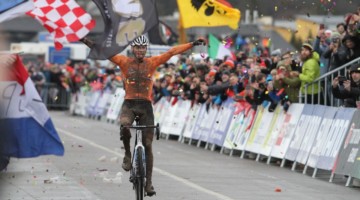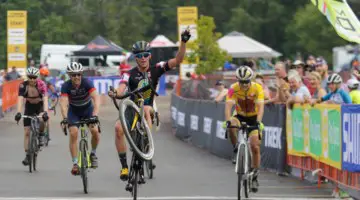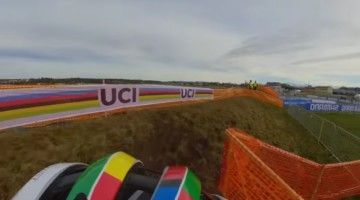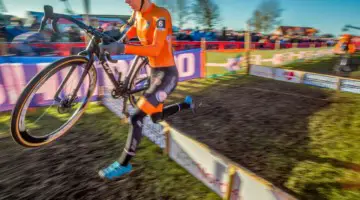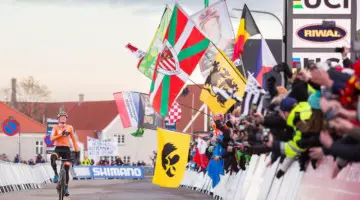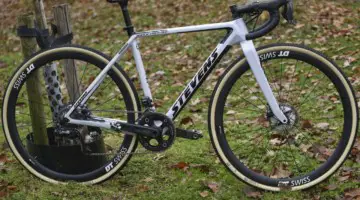The E3 Harelbeke last Friday kicked
After the E3 Harelbeke, Gent-Wevelgem and Dwars door Vlaanderen, cycling madness reaches its climax with the Ronde van Vlaanderen, which is without any doubt the biggest cycling festival in the world.
In this preview, you’ll read everything you need to know about the history of the Ronde van Vlaanderen and about this year’s course for Sunday’s race, as Anna van der Breggen (Boels – Dolmans) and Niki Terpstra (Direct Energie) look to repeat their 2018 wins.
The History of the Ronde van Vlaanderen
In 1912 Odiel Defraeye, a boy from the West-Flemish town of Rumbeke, won the biggest cycling event in the world, the Tour de France. It led to a real euphoria in Flanders.
The year after Defraeye’s
During the First World War, it wasn’t possible to organize the race. But once armistice was signed on November 11th, 1918, they decided to organize a third edition, which was held on March 23th, 1919, had a length of 230 km and had its start and finish in the Medieval city of Ghent.
Another West-Flemish boy, named Henri “Ritte” Van Lerberghe, who had fought in the trenches at the Yser front, came to Ghent to compete, but the boy had no bicycle so he had to borrow one.
Right before the
Once the race director found out, they went to get Ritte. Walking (instead of riding because he had too many beers) his round of honor he shouted to the public “You can all go home, come back tomorrow, I have an advantage of half a day.” [source]
Henri Van Lerberghe won that legendary Tour of Flanders with a 14-minute advantage on the second.
In the United States, the legend of Ritte got picked up by a bicycle constructor. And so it happened that Ritte Racing, a bicycle brand with headquarters in Santa Monica, California, was founded.
Before the Second World War, the Ronde van Vlaanderen was often contested on the same day as Milano-San Remo. The better non-Belgian riders preferred to race in Italy because of that, which made the Ronde van Vlaanderen a mainly Belgian race that only had one non-Belgian winner before the war: Swiss rider Heiri Suter, who won the 1923 edition.
Contrary to the First World War, it was possible to keep organizing the Ronde during the Second World War. In 1942, during the war, West-Flemish rider Briek Schotte won his first Ronde van Vlaanderen. “Ijzeren Briek” (Iron Briek) was often called “the last Flandrien.”
The concept of a “Flandrien” was founded in the interwar period, when riders, with mud on their face, had to conquer the bad cobblestone roads. Because of his crooked position and working style on his bike, Schotte was the model example of the Flandrien.
Currently, a rider who rides well in the Ronde van Vlaanderen and Paris-Roubaix is seen as a Flandrien.
Men’s Superlatives
With wins in 1940, 1941 and 1943 East-Flemish rider Achiel Buysse was the first rider ever to win the Ronde 3 times.
In the course of the history of the Ronde, five other riders would match that record.
The first one who matched that record was Italian rider Fiorenzo Magni, who still is the only rider who won the Ronde 3 times in a row (1949, 1950, 1951). The second one was West-Flemish rider
West-Flemish rider Johan Museeuw was the fourth rider to win the Ronde 3 times (1993, 1995, 1998). Museeuw, who got nicknamed “de Leeuw van Vlaanderen” (the Lion of Flanders), won Paris-Roubaix three times as well and became the first rider having six wins in the Ronde and Roubaix.
Tom Boonen, who won the Ronde 3 times as well (2005, 2006, 2012) broke that 6 wins record by winning Roubaix a fourth time in 2012. Swiss rider Fabian Cancellara, who also managed to get 6 wins, is the last rider who won the Ronde 3 times (2010, 2013, 2014).
The Women’s Race
Since 2004, the Ronde van Vlaanderen has been organized for women as well. The Tour of Flanders for women has had its start in Oudenaarde ever since.
The Women’s race had its finish in Meerbeke until 2011. Since 2012, both the start and finish of the Women’s race are now in Oudenaarde.
In 2004, the first edition of the Ronde for women was won by Russian/Kazakh rider Zoelfia Zabirova.
In 2006, Dutch rider Mirjam Melchers-Van Poppel was the first woman to win the Ronde twice (2005, 2006). In 2012 her record was matched by German rider Judith Arndt (2008, 2012).
In 2017, Coryn Rivera (Team Sunweb) was the first and still is the only American who won the Ronde van Vlaanderen. With her 2017 win, she was the third American rider to end up on the podium of the Ronde van Vlaanderen.
George Hincapie was the first American to do that with a 3rd place in 2006. Kristin Armstrong was the second American to do it, but she did it twice: in the two editions won by Judith Arndt (2008, 2012) she finished 2nd.
Last year, Anna van der Breggen went solo from 27 km out to win her first Ronde.
Iconic Climbs
A lot of cycling fans grew up with the East-Flemish town of Meerbeke being the town where the Ronde had its finish.
During the many years (1973-2011) Meerbeke was the place where the Ronde ended, the last two hills were usually the legendary Muur van Geraardsbergen and the Bosberg.
In 2012 the finale of the Ronde changed. Since then the East-Flemish city of Oudenaarde is the place where the Ronde ends and the iconic Oude Kwaremont and Paterberg are the last two hills.
Last year’s climb of the Oude Kwaremont:
Niki Terpstra and Mads Pedersen on the last climb of the 2018 edition, the Paterberg:
Between 1998 and 2016, the Ronde had its start in the beautiful Medieval city of Bruges. In 2017 the city of Antwerp organized the start of the Ronde for the first time.
In that same year the Muur van Geraardsbergen was finally taken into the course of the Ronde again, but now with still 100 km to go.
With the Muur, the Oude Kwaremont and the Paterberg, we already mentioned three of the Ronde’s four most iconic climbs.
The fourth one, the Koppenberg, is probably the toughest climb in the whole of Flanders.
The Koppenberg, laying in the town of Melden and therefore also called “de
Every year you see riders walking instead of riding that steep part of the climb. In 1976, the Koppenberg was part of the course of the Ronde for the first time.
In 1987 the climb caused a lot of commotion: Danish rider Jesper Skibby fell on the steepest part, followed by a car of the organization riding over his bike. After that incident, the Koppenberg wasn’t part of the course any longer until the street got rebuild in 2002.
By 2007 some new repairs were necessary, which caused the Koppenberg to be excluded from the 2007 Ronde van Vlaanderen. But since 2008 the Koppenberg has been part of the Ronde uninterrupted.
As cyclocross fans know the Koppenberg also provides a great cyclocross race every year since 1988. The last edition of the Koppenbergcross was won by Belgians. Kim Van de Steene and Toon Aerts.
How to Watch
A stream of the Women’s race will again be available from Proximus Sports. It is expected to finish around 9 a.m. EDT.
The Men’s race is available via the usual sources. It is expected to finish around 11 a.m. EDT.
Provisional Start Lists
The Course of the 2019 Women’s Race
The 2019 edition of the Ronde van Vlaanderen for women has a length of 159 km.
On their way the riders will encounter 14 obstacles: 4 cobblestone sections and 10 hills, half of them being paved with cobbles as well.
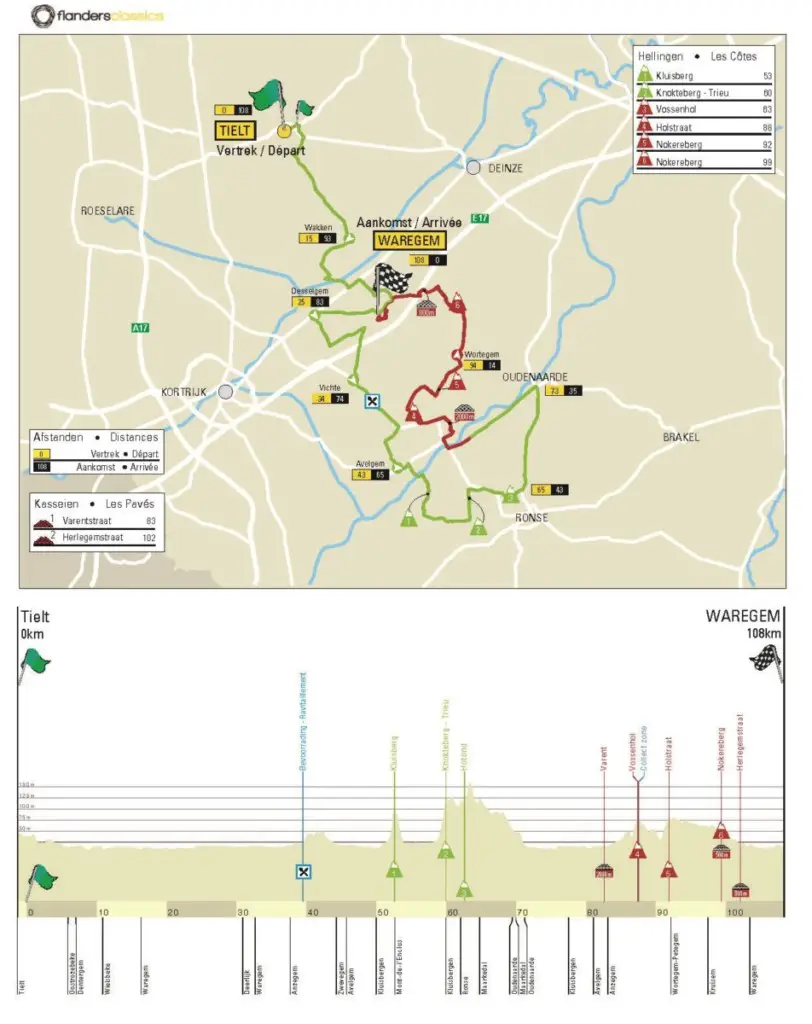
2019 Women’s Tour of Flanders course map
A list of all 14 obstacles:
Lange Munte
- Cobblestone section
- 2470 m
- 149.6 km left
Lippenhovestraat:
- Cobblestone section
- 1300 m
- 125.9 km
lef
Paddestraat
- Cobblestone section
- 1500 m
- 124.4 km left
Achterberg
- Hill
- 1500m – Av. 4.3% – Max. 11%
- 104.6 km left
Haaghoek
- Cobblestone section
- 2000 m
- 98.2 km left
Leberg
- Hill
- 950m – Av. 4,2% – Max. 13,8%
- 95.2 km left
Berendries
- Hill
- 950m – Av. 4,2% – Max. 13,8%
- 91.2 km left
Tenbosse
- Hill
- 450m – Av. 6,9% – Max. 8,7%
- 83.6 km left
Muur-Kapelmuur
- Cobblestone Hill
- 475m – Gem. 9,3% – Max. 19,8%
- 73.2 km left
Kanarieberg
- Hill
- 1000m – Av. 7,7% – Max. 14%
- 45.7 km left
Taaienberg
- Cobblestone Hill
- 530m – Av. 6,6% – Max. 15,8%
- 40.8 km left
Kruisberg/Hotond
- Cobblestone Hill
- 2500m – Av. 5% – Max. 9%
- 26.8 km left
Oude Kwaremont
- Cobblestone Hill
- 2200m – Av. 4% – Max. 11,6%
- 16.9 km left
Paterberg
- Cobblestone Hill
- 360m – Av. 12,9% – Max. 20,3%
- 13.5 km left
The Course of the 2019 Men’s Race
The 2019 edition of the Ronde van Vlaanderen for men has a length of 270 km.
On their
A list of all obstacles:
Lippenhovestraat
- Cobblestone section
- 1300 m
- 183.1 km left
Paddestraat
- Cobblestone section
- 1500 m
- 181.7 km left
Oude Kwaremont
- Cobblestone Hill
- 2200m – Av. 4% – Max. 11,6%
- 150.6 km left
Kortekeer
- Hill
- 1.000m – Av. 6,4% – Max. 17%,
- 140.1 km left
Ladeuze
- Hill
- 1.100m – Av. 5.8% – Max. 12.2%
- 133.9 km lfeft
Wolvenberg
- Hill
- 645m – Av. 7,9% – Max. 17,3%
- 130. 2 km left
Holleweg
- Cobblestone section
- 1500 m
- 129.5 km left
Haaghoek
- Cobblestone section
- 2000 m
- 124.4 km left
Leberg
- Hill
- 950m – Av. 4,2% – Max 13,8%
- 121.4 km left
Berendries
- Hill
- 940m – Av. 7% – Max. 12,3%
- 117.4 km left
Tenbosse
- Hill
- 450m – Av. 6,9% – Max. 8,7%
- 109.8 km left
Muur-Kapelmuur
- Cobblestone Hill
- 475m – Av. 9,3% – Max. 19,8%
- 99.5 km left
Kanarieberg
- Hill
- 1000m – Av. 7,7% – Max. 14%
- 71.9 km left
Oude Kwaremont
- Cobblestone Hill
- 2200m – Av. 4% – Max. 11,6%
- 56.0 km left
Paterberg
- Cobblestone Hill
- 360m – Av. 12,9% – Max. 20,3%
- 52.6 km left
Koppenberg
- Cobblestone Hill
- 600m – Av. 11,6 % – Max. 22 %
- 45.9 km left
Mariaborrestraat
- Cobblestone section
- 2000 m
- 41.9 km left
Steenbeekdries
- Cobblestone Hill
- 700m – Av. 5,3% – Max. 6,7%
- 40.5 km left
Taaienberg
- Cobblestone Hill
- 530m – Av. 6,6% – Max. 15,8%
- 38.1 km left
Kruisberg/Hotond
- Cobblestone Hill
- 2500m – Av. 5% – Max. 9%
- 26.8 km left
Oude Kwaremont
- Cobblestone Hill
- 2200m – Av. 4% – Max. 11,6%
- 16.9 km left
Paterberg
- Cobblestone Hill
- 360m – Av. 12,9% – Max. 20,3%
- 13.5 km left
Featured image: LimoWreck, used under a Creative Commons license























